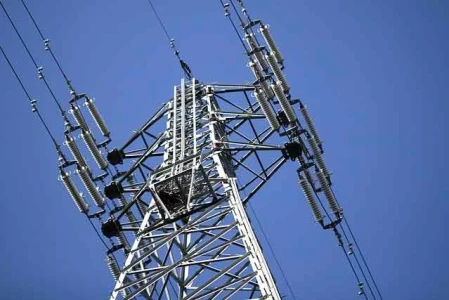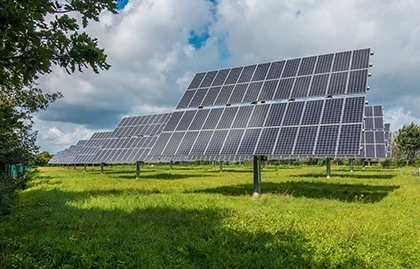U.S. Treasury Finalizes Clean Energy Tax Credit Rules

In a significant move for the U.S. clean energy sector, the U.S. Department of the Treasury has released the final set of rules for the Clean Energy Investment Tax Credit (ITC), which is poised to provide major financial incentives for renewable energy projects across the nation. This tax credit, part of the Inflation Reduction Act (IRA) passed in 2022, aims to accelerate the country's transition to a cleaner energy grid by incentivizing investments in solar, wind, energy storage, and other green technologies. With the final regulations now in place, developers and investors have greater clarity on how to access these credits and help meet the U.S.'s climate and energy goals.
The Clean Energy ITC: What It Is and Why It Matters
The Clean Energy Investment Tax Credit (ITC) provides a federal tax incentive for investments in renewable energy projects. The credit offers a percentage of the investment made into eligible renewable energy projects, lowering the upfront capital costs that developers and investors face. The ITC is designed to support projects like solar and wind energy systems, energy storage, and more, encouraging both large-scale and smaller, community-based installations.
The release of these final rules marks a pivotal moment in the nation’s efforts to decarbonize its energy sector. The clean energy transition requires significant investment, and the ITC is one of the key tools that will help channel private capital into green technologies. By offering tax credits, the government is enabling developers to offset a portion of the initial costs of clean energy projects, thereby reducing the financial barriers to entry.
Under the Inflation Reduction Act, the ITC was extended and expanded to cover a broader range of renewable energy technologies, providing long-term certainty for the industry. The finalized rules give clearer guidance on eligibility criteria, financial structures, and the application process, ensuring that businesses can take full advantage of the credit.
Key Highlights of the Final Rules
-
Expanded Eligibility: One of the most notable features of the new rules is the expanded eligibility criteria for the tax credit. Previously, the ITC primarily applied to solar and wind energy projects. However, the final rules extend eligibility to a wide range of clean energy technologies, including energy storage systems, offshore wind, and biogas facilities. This means that a broader spectrum of renewable energy projects will benefit from the incentives, facilitating a more diverse energy transition.
-
Increased Credit for Domestic Manufacturing: The Treasury has outlined provisions that provide higher credit amounts for projects that use domestically manufactured clean energy components. This is a key step in bolstering the U.S. clean energy supply chain and reducing reliance on foreign imports, which has been a challenge in the renewable energy sector. Projects using U.S.-made solar panels, wind turbines, and batteries will qualify for a larger tax credit, encouraging manufacturers to expand operations and increase production capacity within the U.S.
-
Technology-Neutral Approach: The final rules also establish a technology-neutral approach to the tax credit. Instead of offering different credits for each specific type of clean energy, the new rules offer a standardized credit that applies to a range of eligible technologies. This approach simplifies the process for investors and developers, reducing administrative complexity while promoting innovation across the sector.
-
Bonus Credits for Low-Income and Disadvantaged Communities: In an effort to promote equity and environmental justice, the rules include bonus credits for projects located in low-income or disadvantaged communities. These areas are often underserved when it comes to clean energy infrastructure, and this provision is designed to ensure that the benefits of clean energy investments are distributed more equitably.
-
Simplified Application Process: The Treasury has streamlined the application process for businesses seeking to access the ITC. The new rules provide a clearer framework for applying for the credit, which should reduce delays and administrative burdens for developers. This will make it easier for both small and large projects to move forward with the necessary financing, improving the speed and efficiency of project development.
Implications for the Clean Energy Sector
The release of these final rules is a major milestone for the clean energy sector, providing much-needed certainty for investors, developers, and manufacturers. The ITC plays a central role in the development of renewable energy projects in the U.S., and the new regulations are expected to spur significant investment in the sector. With increased incentives for domestic manufacturing and a broader range of eligible technologies, the rules are poised to drive growth across the entire clean energy supply chain.
The bonus credits for projects in disadvantaged communities are particularly significant, as they help address environmental justice concerns and ensure that the clean energy transition benefits all Americans, regardless of their income or geographical location. By encouraging investment in these communities, the rules can help create jobs, reduce energy costs, and improve air quality, all while promoting a greener economy.
Looking Ahead
As the U.S. moves closer to its clean energy and climate goals, the final rules for the ITC represent a crucial step forward. By offering strong financial incentives, the federal government is signaling its commitment to tackling climate change and promoting a sustainable future. However, much work remains to be done in terms of implementing these incentives effectively and ensuring that clean energy projects can proceed without significant obstacles.
The U.S. Treasury's final Clean Energy ITC rules will undoubtedly play a pivotal role in the country’s clean energy transition, and their impact will likely be felt for years to come as the renewable energy sector continues to expand.









